Insulin & Delivery Types Available
Today we have many types of insulin and delivery systems available to us. Which is right for you? Work with your doctor to determine if you need as few as one or as many as four or five injections per day. It will depend on what type of diabetes you have, your age and ability to manage low blood sugar reactions and your lifestyle.
Here is a rundown of the different types available and how they work:
Insulin Type Chart
| Onset | Peak | Duration | Pen | Manufacturer | |
|---|---|---|---|---|---|
| Short Acting Regular (R) |
30-60 min | 2-4 hours | 6-8 hours | yes no |
Novo Lilly |
| Rapid Insulin Analog Novolog Humalog |
5-15 min 5-15 min |
30-60 min 30-60 min |
6 hours 5 hours |
yes yes |
Novo Lilly |
| Intermediate Acting NPH (N) Lente (L) |
1-2 hours 2-3 hours |
6-10 hours 6-12 hours |
12-18 hours 12-20 hours |
yes no |
Lilly- Novo Lilly – Novo |
| Long acting Ultralente (U) Lantus |
6 hours 1-2 hours |
12-18 hours no peak |
20-24 hours 22-24 hours |
no no |
Lilly Aventis |
| Mixed- Regular Novolin 70/30 |
30-60 min | 2-12 hours | 12-18 hours | yes | Novo |
| Mixed- Analog Novolog Mix 70/30 Humalog 75/25 |
5-15 min 5-15 min |
30 min – 8 hrs 30 min – 8 hrs |
10-14 hours 10-14 hours |
yes yes |
Novo Lilly |
Today’s insulin is human-based, made from human bacteria or yeast, and looks like what your own body produces. Back in 1922, the first insulin produced was pork and beef based. Human insulin did not become available until the mid 1980’s. There is still some pure pork insulin available, known as Iletin II. Human insulins are faster acting than animal products; therefore, most people usually mix a fast-acting short or rapid insulin with an intermediate or long insulin two to four times per day.
Mixing and Storage
All of the insulins listed above can be mixed with each other, with the exception ofLantus. Because of its low pH and the way it works, Lantus should not be mixed with any other insulin. Also, the insulin analog preparations may lose their rapid action if mixed with longer insulins, such as N or U. If you mix a rapid analog with another insulin, it should be injected immediately to retain its rapid action.
Unopened insulin should be stored in the refrigerator, and will remain good until the expiration date. Once opened, it may be stored in the fridge until the expiration date, except Lantus, or at room temperature for up to 30 days if it is in a glass vial or cartridge. Plastic pen-cartridges of N and mixed insulins are only good at room temperature for 10-14 days. Lantus is only good for 30 days after opening, whether in the fridge or at room temp. Always check the package insert for storage recommendations. Do not attempt to use the insulin after the recommended time frame. Your blood sugars will get out of control quickly.
The short and rapid insulins, plus Lantus, should always be clear without color or sediment. Do not use if they are not. All of the other insulins should be cloudy and require mixing before use. They will separate when sitting, but should easily mix back into solution without clumping. Cloudy insulins should be mixed for a minimum of 20 seconds by rolling the vial or inverting the pen.
Injecting Insulin
Since human insulins do not cause the lumpy-bumpy lipohypertrophy or lipoatropy that animal insulins caused, it is not necessary to rotate to different areas of the body as in the past. Different muscle groups use insulin differently. The abdomen offers the fastest absorption, so it is ideal for fast and rapid insulins. The hip and buttock are the slowest areas of absorption. Arms and legs are in-between. Most people choose one area for all of their injections, and rotate within that area. The abdomen is the most frequently used area. It is easier to get to than the arm or hip, usually has “an inch to pinch” and doesn’t bruise as much as the thigh. You may inject as high as under your lowest rib and as low as your pelvic bones, all the way around toward the back. Do stay about 1 inch away from your navel or any scars since insulin does not absorb well in those areas. And remember that giving all of your injections in one little spot will cause serious scar tissue formation and poor insulin absorption. Remember to “pinch an inch” and inject straight into the skin at a 90-degree angle. Pinching prevents the needle from going too deep into the fat, which stings more. After injecting, be sure to count to at least 5, and then release your pinch before removing the needle. This will help ensure that all of the insulin is absorbed and doesn’t leak back out.
Occasionally you will notice a drop of blood at the injection site. You just injected through a tiny capillary, and it leaked when you removed the needle. It will not affect the insulin absorption. It may, however, cause a bruise, which will look ugly but won’t be harmful and should reabsorb in a few days.
Insulin syringes and pen-needles may be reused if they are clean and carefully recapped. If the needle touches any surface other than the stopper of the insulin vial/cartridge or your skin, it is dirty and must be disposed of in a puncture-proof container -detergent bottle, bleach bottle, milk jug. The container may then be thrown in the trash or taken to your doctor’s office to be disposed of. Biohazard containers can be taken to your doctor’s office, a medical lab or hospital for disposal.
Insulin Pen Systems
Most insulins come in a pen system. A pen is convenient and easy to use, and has a neat little 31 gauge short needle available that is very comfortable. Which is best for you? It depends on the type of insulin you use, your visual acuity, your dexterity and your lifestlye. Ask your doctor if a pen is right for you.
Eli Lilly offers a disposable pen for their Humalog, N and 75/25. Made of high impact plastic, it looks like a grey Sharpie marker. Be sure to hold the needle in your skin for at least 10 seconds after injecting to be sure all the insulin stays in your body.
BD offers a reusable pen system that takes cartridges from Lilly.
Novo Nordisk features a complete line of pen products to fit your lifestyle.
Novo Pen3 is a metal reusable system that takes glass cartridges of Novolog, Novolog Mix 70/30, R, N and 70/30.
Novo Pen Junior is a reusable system that takes delivers in _ unit increments, using glass cartirdges of Novolog, R, N and 70/30.
Novolog FlexPen is a disposable plastic pen which delivers 1 unit increments of Novolog and Novolog Mix 70/30.
InnoLet is a disposable pen that looks like an egg timer, easy to read the dose for those with poor vision.
Available in R, N and 70/30.
InDuo mixes a reusable pen that takes the same cartridges as the NovoPen3 with the Ultra glucose meter from Lifescan in a complete system.
ADS also carries a wide array of insulin pumps for continuous and easy delivery.






